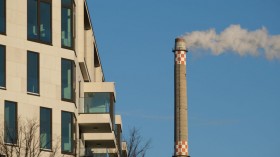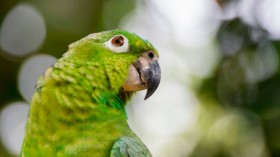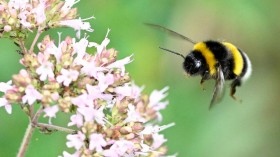A swarm of invasive elm zigzag sawflies is defoliating elm trees in New York.
New Invasive Species in New York
The New York State Department of Environmental Conservation (DEC) has issued a statement alerting citizens about a new invasive species that has been discovered in Western New York (WNY). The Elm Zigzag Sawfly has reportedly been discovered in Allegany County this summer.
The East Asian pest known as the Elm Zigzag Sawfly (Aproceros leucopoda) is a nuisance, even though It only consumes the elm tree leaves, which are common in New York State.
The 'zigzag' pattern it leaves behind is a telltale clue that it's an Elm ZigZag Sawfly feasting on elm leaves. In addition to Allegany County, it has also been discovered in the counties of Ontario, Madison, Ulster, Saratoga, Schenectady, Warren, Albany, and Clinton.
Reports so far indicate that defoliation has been minimal. However, the Siberian elms in the yard of a resident of Niskayuna, New York (Schenectady County), were severely defoliated.
DEC urges citizens to use iMap Invasives to report any Elm ZigZag Sawfly sightings on their properties so that authorities can track the invasive species' movements and limit the damage.
Elm Zigzag Sawfly
Asia, notably regions of China and Japan, is home to the invasive forest insect known as the elm zigzag sawfly. The extreme defoliation of elm trees (Ulmus spp.) brought on by this invasive species can have a cascade effect on the ecology of the forest, the economy, and societal values. The distinctive zigzag pattern the larva leaves behind while feeding is how the species derives its name.
The elm zigzag sawfly has subsequently been discovered, first in Virginia in 2021 and then in 2022 in North Carolina, Maryland, Pennsylvania, and New York.
1.8 mm in length and grayish-white in hue when they first emerge from the egg, elm zigzag sawfly larvae are tiny. Adult larvae are green, with a black band around their heads, and have brown or black T-shaped patterns above their second and third true pairs of legs.
Also Read: Bed Bugs Can Transmit Staph Infection, Experiment via Blood Feeding Shows
They can reach lengths of 10 to 11 mm. The invasive species have six thoracic legs plus six or more pairs of fleshy prolegs on their abdomen, much like all hymenopteran larvae do. Lepidopteran larvae, on the other hand, have five or fewer pairs of thick prolegs on the abdomen, including butterflies and moths.
The adult elm zigzag sawfly is a tiny, shiny, black, winged insect that can grow to a length of 7-8 mm. They feature yellow to white legs with white tips, smoky-brown wings, a white patch on the bottom of the thorax, and a dark brown "upper lip".
Defoliated Elm Trees
A little egg-laying scar on the edge of the elm leaf, where the female EZS implanted an egg, is the first sign of harm. The unique zigzag notch of the little sawfly larva, which reaches 5-10 mm inward from the leaf's edge, is made as it starts to feed. On a single leaf, many larvae might feed. The whole leaf might be eaten if several larvae on a leaf continue to feed continuously. Partial or total defoliation of trees that are heavily infected is possible.
Related Article: Invasive Cattle Screwworm Fly Outbreak in Panama Border Halts Transport of Infested Livestock
© 2024 NatureWorldNews.com All rights reserved. Do not reproduce without permission.





